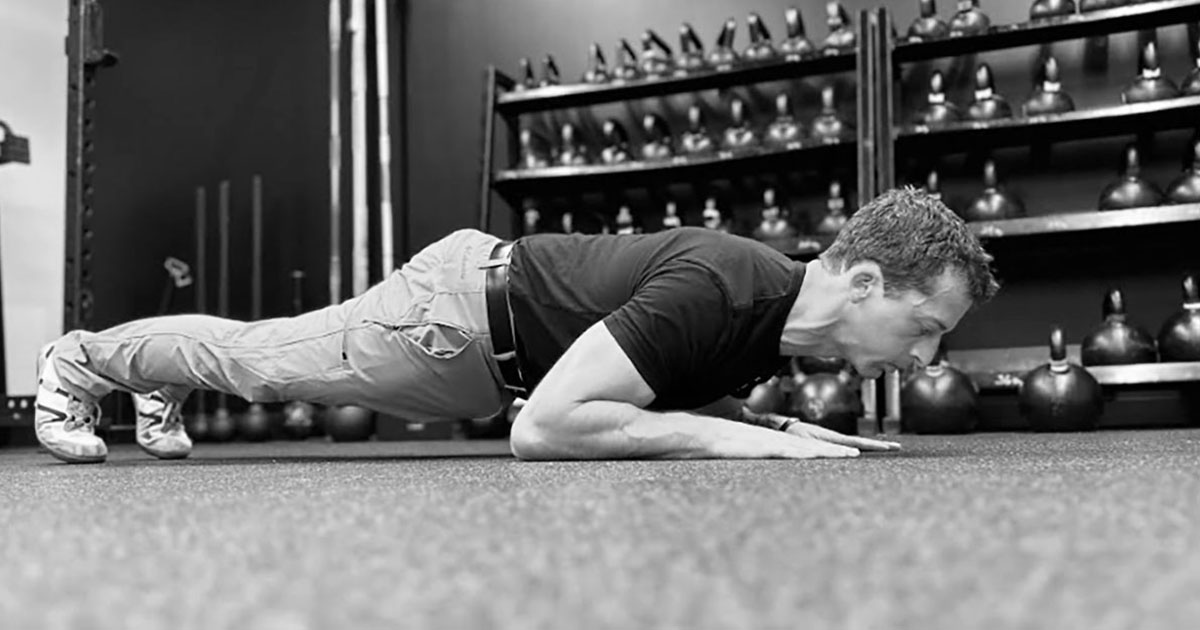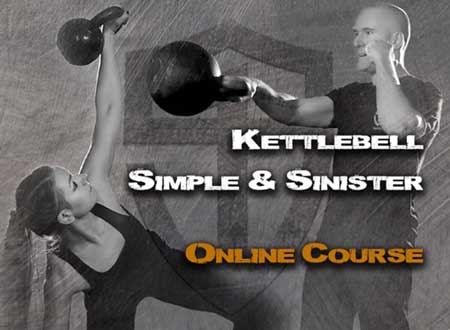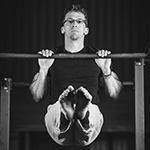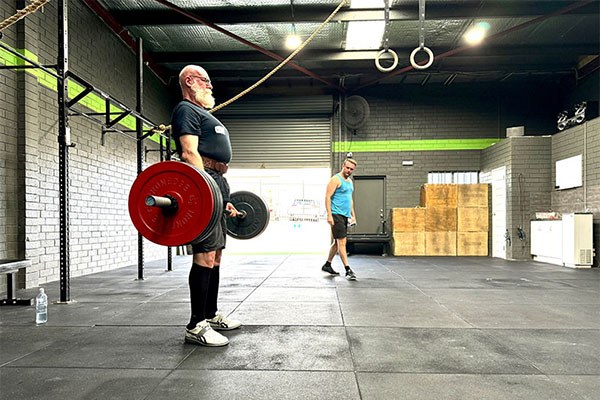Over the past few decades there has been a curious trend that has slowly but surely seeped its way into the hearts and minds of an alarming number of iron rats, both professional and recreational alike.
That trend?
The belief that you don’t need to directly train your arms.
The claim goes a little something like this:
Your arms get enough work from compound exercises like pullups, military presses, bench presses, and so on, so why waste valuable training time doing extra exercises for them? Oh, and also direct arm training belongs solely to the vain, bourgeois world of bodybuilding and has no place in the noble tradition of strength training.
Pardon my French, but to that I say au contraire, mon frere (“on the contrary, my brother”).
For starters, we largely ignore similar rationales for avoiding direct ab training by those who claim that your abs get enough work being squeezed hard in squats and deadlifts, so why give this anti-arm training screed even so much as a second thought?
If you care about your strength, you shouldn’t.
Direct arm training has a long and illustrious history among the world’s hardest, most fearsome names in strength—men and women with a hearty respect for the jolly old game of taming iron and a seething, unquenchable hatred for gravity.
Cases in point:
- Chuck Sipes—A lumberjack by day and crusher of weights by night, he had a 570lb bench at 220lb of bodyweight—a rarity in those days, and particularly for someone so relatively light. Chuck left no stone unturned in his training, and obsessively trained his arms as much as any other body part.
- John Grimek—The 1948 Mr. Universe who could Olympic press 364lb at a bodyweight of 221 and was still squatting 695lb at the tender age of 70—would often do “5, 6, 7 exercises [for the arms] that were different,” making sure he could hit every muscle at every angle.
- Louie Simmons—One of the most legendary powerlifting coaches of all time often sang the praises of arm strength in hitting massive bench presses, and as a result was a big advocate for direct arm work.
- Siegmund Klein—The 147lb German-American strength legend renowned for such bonkers feats as 19 freestanding handstand pushups on the edge of a bench, a 221lb military press, and five reps with 300lb in the Steinborn squat, Sig wrote articles on his training that included enough direct arm work to make Ah-nuld Schwarzenegger himself blush.
The list could go on and on, but you get the picture.
Let’s briefly touch on why direct arm training might be just what the proverbial doctor ordered to get your long-stalled progress back in action.
- While exercises like one-arm pushups, military presses, pullups, and more do indeed train your biceps and triceps to a great degree, it is the shoulders, pecs, and lats that are the real stars of the show.
- So, while your upper arms can still get stronger for a while on a diet of compound exercises only, that gravy train will run out eventually and you’ll find yourself stuck on a plateau at best or dealing with nagging pain in your elbows and shoulders at worst as those muscles struggle to handle the loads that your shoulders, chest, and back are still handling with ease.
- As legendary self-development speaker Earl Nightingale pointed out, a military convoy can only go as fast as its slowest vessel to maintain formation. The same is true for your body: your favorite exercises very often will only improve as fast as the weakest muscle involved—so bring up the weakest muscles and before you know it, you’ll be progressing at record speed.
So, does this mean you have to abandon your favorite compound lifts for a few months, let your kettlebells collect dust, and take out a second mortgage on your house so you can invest in a full rack of dumbbells while you play catch up with isolation lifts?
Not even close.
You can make dynamite progress in most cases by sticking with your current plan and simply adding a few upper arm exercises that require only a few light to moderate kettlebells and your own fair flesh to amp up your upper body strength. I’ll show you how.
Naturally, if you do have dumbbells at your disposal, feel free to use them instead. But if not, the following routine ought to get your body’s attention.
Get the basics right first
#1: The Biceps
Forgive me, please, but I am going to ask you to ignore all of your instincts and do something with a kettlebell you probably never thought you’d hear an SFG ask you to do: curl it.
Before you wail, gnash your teeth, and whip a crowd of your fellow kettlebell enthusiasts into a furious frenzy to march on my house with torches in hand and demand I resign my SFG II credentials or face the music, hear me out.
As Pavel has noted in the SFG manual, the original “style” of kettlebell lifting was basically a collection of odd lifts—and curls very commonly made their way into the various feats performed by the gireviks and girevichkas of old.
Case in point:
Strongman Al Tauscher was known to be able to one-arm press a 105lb kettlebell while easily curling a 75lb kettlebell in his other hand (open palmed, no less)—all at a bodyweight of 157lb—a manly effort by any standard.
German wrestler and performing strongman Carl Busch routinely did kettlebell curls as a part of his training—and given that he was strong enough to bent press 250lb at a bodyweight of 175, I’d say the curls probably didn’t turn him into a big wuss.

And speaking of bent presses, the legendary Arthur Saxons—the man with the heaviest bent press in recorded history at 371lb—would often do a hybrid lift known as the two-hands anyhow, which involved doing a bent press followed by curling a kettlebell in the bottom position, standing up, and then pressing it overhead.

so I’d say his methods worked.
In other words, people who were a whole lot stronger than you didn’t find curls objectionable, so neither should you.
#2: Triceps Extensions
In the same vein as bicep curls, many old-time strongmen didn’t shy away from direct tricep work, either.
In his 1932 book Molding a Mighty Arm, Canadian strongman and weightlifter George Jowett lays out a number of direct tricep exercises done with self-resistance (i.e., you hold onto your wrist with your free hand and push against it while resisting).
Similarly, in his 1905 book Textbook of Weight-Lifting, Arthur Saxon demonstrates a unique overhead tricep exercise where you rest a kettlebell on one shoulder and grip it by the handle with the opposite hand, at which point you extend it over head and lower it back down to the shoulder.

Needless to say, unless you’re on a first-name basis with your local undertaker, you might want to skip this one and stick with a reliable classic that was also a favorite of strongmen such as the aforementioned Sig Klein: the classic tiger bend pushup.
Have you put your torches away? Called off that march on my house?
Good.
Now let’s take a brief look at the techniques you’ll be using:


Next, apply them to this simple but effective routine that you can toss into your existing program to help your twig-like arms turn into full-blown branches of buffness in short order.
You’ll do this routine after your main training days. Assuming you’re training three days per week, that means you’ll do three direct arm training sessions per week. If time or recovery are an issue, feel free to switch it to two days per week—on your in-between days—and simply stretch out the amount of time it would otherwise take you to complete this four-week program.
Now listen: I know you’re a red-blooded man or woman who has probably seen and done curls and maybe even tricep extensions a time or two. The technique is not super complex. That said, there are some guidelines that you’re going to want to do to make sure you’re using the StrongFirst-approved principles to forge a bold path toward powerful pipes.
Step 1: Follow the law of irradiation
Whether you use kettlebells or dumbbells, don’t be lackadaisical with your mitts; be sure to squeeze the heck out of the handle like you would for a heavy press. The law of irradiation (i.e., the physiological law that describes the “spillover effect” of tension to nearby muscle groups) demands it.
Step 2: Use a full range of motion
We might be taking a page out of the gym bros’ playbook here, but it doesn’t mean we have to read it cover to cover. Lock your elbows out at the bottom of your curls and top of your tiger bend pushups.
Pavel explains in Beyond Bodybuilding that failure to do so leads to a phenomenon known as “contracture”—a loss of flexibility—and can put your joints at risk for injury should you ever find yourself trying to express strength at the natural (but untrained) limits of your range of motion.
Step 3: Use moderate reps rather than low reps
As accustomed as we may be to sets of 3-5, so-called isolation movements like curls and tricep extensions are better practiced with sets of 8-12 reps and with relatively modest weights (at least initially. Remember, you’re adding these to an existing program and likely haven’t done any direct arm work in a long time, if ever, and as such even a moderate stimulus will likely give you exactly what you’re looking for in the results department). No sense reinventing the wheel when dedicated bodybuilders have been using it effectively for generations.
Plus, this will help you avoid the dreaded time creep that can happen when we try to fill gaps in our programming. Doing 2-3 sets of 2 exercises is a lot more time efficient than, say, 5 or more sets of the same two drills.
Step 4: Find your 12+ rep max for each movement
If you wanted to go on a serious arm-building program, you might go as far as to use as close to your eight-rep max as possible to maximize what Pavel points out as mission critical in his classic tome, Beyond Bodybuilding: “Both fatigue and tension need to be present to turn on the cells’ growth machinery.” That said, we’re simply trying to fill some gaps while still balancing the demands of our current training programs—whatever they may be—so leaving a few extra reps in the tank only makes sense.
With that in mind, let’s take a look at what I like to call “The Right to Bear-Like Arms” program:




At the end of four weeks, roll up your sleeves, shoot a front double bicep pose in the mirror and admire the fruits of your labors.
While your tailor may hate you, your favorite lifts, your joints, and very probably even your significant other will all love the transformation you’ve undergone. And what’s more important than that?
Give the Right to Bear-Like Arms program a shot and drop me a line to let me know how you like it. I’d love to hear from you.
Have fun and happy training!
Get the basics right first






